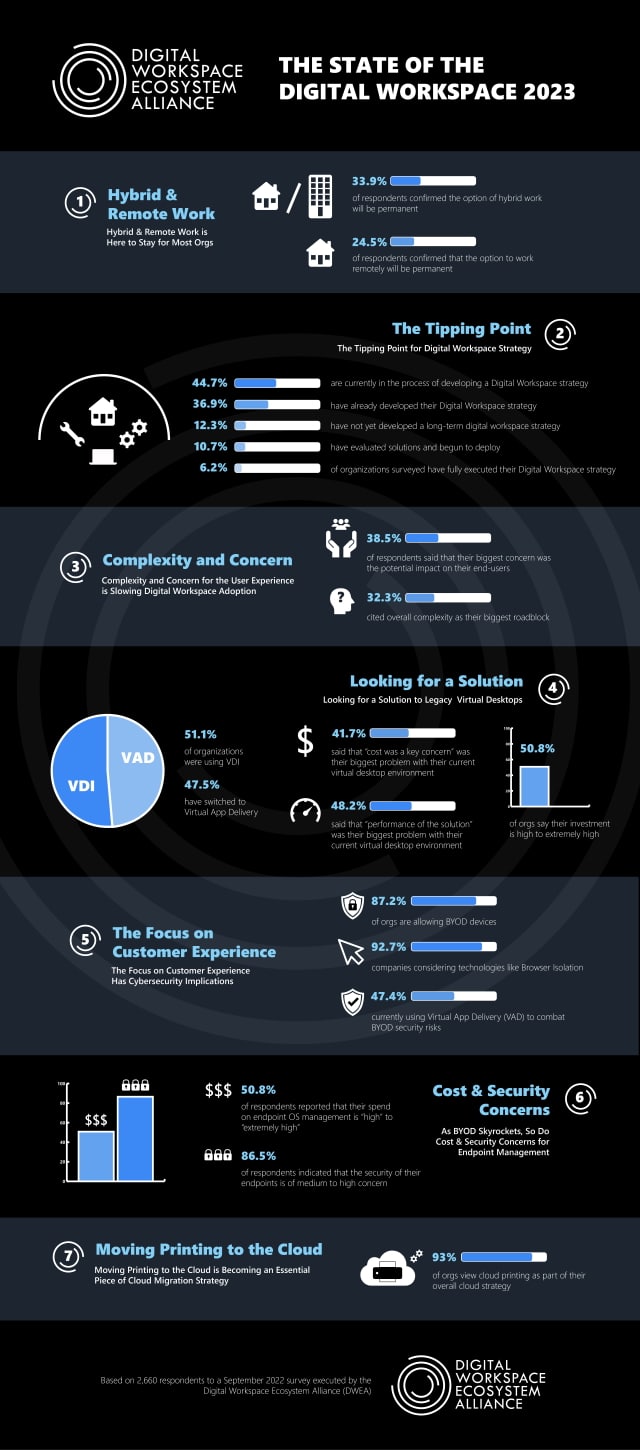The changing face of the digital workspace

One of the effects of the pandemic was a rapid and massive shift to remote working and it's becoming increasingly clear that we're not going to be returning to quite the way things were before.
The Digital Workspace Ecosystem Alliance (DWEA) has produced a State of the Digital Workspace 2023 report, based on the responses from 2,660 enterprise IT survey respondents worldwide, looking at the current work landscape.
It shows there's a clear division of thinking when it comes to whether the workforce will eventually go back full-time into the office. The majority (58.4 percent) have committed to hybrid and remote work, and those organizations have benefitted from being able to build their digital workspace strategy accordingly.
For organizations that do expect their people to be back in the office full time at some point in the future (41.6 percent), the roadmap and timeline for getting there is uncertain as 44.7 percent are still in the process of developing their digital workspace strategy.
Concern about the end user experience (38.5 percent) and the complexity of rolling out digital workspace technologies (32.3 percent) are seen as the two biggest roadblocks to digital workspace adoption.
BYOD is also a concern as the study shows 87.2 percent of survey respondents confirm that they are currently allowing users to access work-related apps and data on privately owned devices. This marks a significant uptick in BYOD policy adoption over earlier years. This is reflected in budgets as 50.8 percent of respondents say that their spending on endpoint OS management and updates is high or extremely high.
The full report is available from then DWEA site and there's an infographic summary of the main findings below.

Image credit: everythingposs/depositphotos.com
